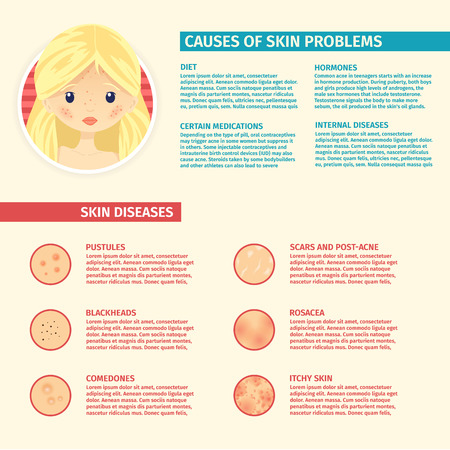Understanding IPL and Its Relevance to British Complexions
Intense Pulsed Light (IPL) technology has become an increasingly popular solution for tackling pigmentation and sun damage, especially among those living in the UK. Unlike laser treatments, IPL employs broad-spectrum light to target unwanted pigment and sun-induced imperfections on the skin’s surface. This gentle yet effective approach makes it suitable for the diverse range of complexions found across Britain, from porcelain through to olive undertones. The UK’s unique environmental factors—such as unpredictable weather, high humidity, and occasional bursts of strong sunlight—can leave even the most diligent sunscreen users vulnerable to uneven skin tone and stubborn sun spots. By understanding how IPL works in harmony with British skin types and responding to local environmental challenges, individuals can make informed choices about managing and reversing the visible effects of sun exposure and pigmentation.
2. The Science Behind Pigmentation and Sun Damage
Living in the UK, we’re all familiar with the famously unpredictable weather—one moment it’s drizzling, the next we’re basking in a rare burst of sunshine. While British skin types often don’t experience year-round intense sunlight like our Mediterranean neighbours, this sporadic sun exposure can actually make pigmentation issues more pronounced. When our skin is suddenly exposed to ultraviolet (UV) rays after months of grey skies, it can trigger uneven melanin production, leading to freckles, age spots, and other forms of hyperpigmentation.
But what really happens beneath the surface? Here’s a quick look at how those fleeting sunny spells affect our skin:
| Skin Change | British Weather Effect | Result |
|---|---|---|
| Melanin Overproduction | Sudden UV exposure after long periods indoors | Patchy brown spots and freckles appear |
| DNA Damage | Lack of gradual sun adaptation due to inconsistent weather | Early signs of ageing and risk of persistent pigmentation |
| Reduced Natural Protection | Pale or fair skin more common in British populations | More susceptible to visible sun damage and pigmentation changes |
It’s not just about sunbathing on Brighton Beach either; even short walks in the park or sitting by a window can introduce enough UV to affect your skin. Over time, these small bursts of sunlight add up, especially for typically fair British complexions that don’t have as much natural melanin protection. Understanding these subtle but impactful changes is key to appreciating why targeted treatments like IPL are so effective for addressing pigmentation and sun damage unique to British skin types.

3. How IPL Targets Pigmentation and Sun Damage
IPL (Intense Pulsed Light) technology has become increasingly popular in the UK, particularly for addressing common pigmentation issues such as freckles, age spots, and uneven skin tone. British skin types often fall within the Fitzpatrick scale II to IV – from fair with freckles to light brown – which means sensitivity to sun exposure is a frequent concern. IPL treatments work by emitting broad-spectrum light that targets melanin, the pigment responsible for dark spots and discolouration. When the light energy is absorbed by these pigmented areas, it breaks down excess melanin, leading to gradual fading of freckles and sunspots over a series of sessions.
One of the advantages of IPL for British clients is its ability to be tailored according to individual skin characteristics. For those with lighter Fitzpatrick skin types (I-II), IPL can gently address widespread sun damage and redness without excessive risk of hyperpigmentation. Meanwhile, for individuals with slightly deeper tones (III-IV), practitioners adjust the wavelengths and settings to ensure safety while effectively treating stubborn pigmentation. This customisation is crucial, as it helps achieve a brighter, more even complexion while minimising potential side effects.
What’s remarkable about IPL is its versatility: not only does it lighten visible pigmentation, but it also stimulates collagen production beneath the surface, contributing to overall skin rejuvenation. This dual effect is particularly valued by British clients who wish to reverse signs of cumulative sun exposure—think unexpected sunny days or garden afternoons gone slightly too far—while restoring their skin’s natural radiance. Ultimately, IPL offers a sophisticated yet gentle solution that resonates with the needs of UK residents seeking to reclaim an even-toned, luminous complexion.
4. Personal Experiences: British Skin and IPL Results
There’s nothing quite as reassuring as hearing firsthand accounts from people who have actually undergone IPL treatments here in the UK. While clinical data is important, real stories from real Britons give us a more relatable sense of what to expect—both visually and emotionally.
Visual Transformations: From Freckles to Flawless
Many British individuals, especially those with fair or Celtic skin types, report significant visual improvements after IPL sessions. For example, Sarah from Manchester shared that her childhood freckles and stubborn sunspots faded noticeably after just three treatments. She described her skin as “brighter, clearer, and definitely more even-toned,” allowing her to go makeup-free on weekends with new confidence.
| Name | Skin Type | Main Concern | IPL Sessions | Result |
|---|---|---|---|---|
| Sarah (Manchester) | Type I (Fair) | Freckles & Sunspots | 3 | Significant fading, brighter complexion |
| James (Brighton) | Type II (Light) | Pigmentation Patches | 4 | Smoother texture, even tone |
| Aisha (London) | Type IV (Olive) | Sun Damage & Uneven Tone | 5 | Diminished spots, glowing skin |
The Emotional Impact: Confidence Reclaimed
The psychological boost is just as important as the visible results. James from Brighton admitted he had avoided social events due to patchy pigmentation on his cheeks, but after completing his course of IPL treatments, he felt comfortable joining friends at the pub without worrying about concealer. Similarly, Aisha in London described a “weight lifted” after years of covering up sun damage and feeling self-conscious during summer holidays.
The British Perspective: Subtlety Matters
One thing that stands out in British testimonials is the preference for natural-looking results. Clients often mention appreciating how IPL doesn’t leave their skin looking artificial or over-processed—just like their best selves after a brisk walk along the coast. This understated transformation aligns beautifully with the classic British sense of style: effortless, authentic, and quietly radiant.
5. Safety, Expectations, and Aftercare Advice in the UK Context
If you’re considering IPL treatments to address pigmentation and sun damage on British skin, it’s essential to know what to expect at every stage, with a focus on safety and aftercare that suits our unique climate and lifestyles.
What to Expect Before Your Session
Before your first session, a reputable practitioner in the UK will conduct a thorough consultation. This usually includes an assessment of your Fitzpatrick skin type—a classification especially relevant here due to our broad range of skin tones from pale Celtic complexions to olive undertones. You’ll be asked about your medical history and any current medications, as these can influence your skin’s response. It’s advisable to avoid tanning (natural or artificial) for at least two weeks prior, as this can increase the risk of side effects. Using high-factor SPF is always recommended in the UK, but it becomes even more crucial before treatment.
During Your IPL Treatment
The session itself is typically quick and relatively comfortable; many describe the sensation as a mild snapping or warmth. Some clinics offer cooling gels or devices to soothe the skin—particularly helpful if your skin is sensitive or you’re prone to redness, which is common among British skin types. Protective eyewear will be provided. A patch test might be performed initially to ensure your skin reacts well, which is a standard safety step in most UK clinics.
Aftercare Tips for British Lifestyles
Post-Treatment Care
After your session, it’s normal for the treated area to appear slightly red or feel warm—almost like mild sunburn. This usually subsides within 24-48 hours. Because our weather can be unpredictable (yes, even in summer!), don’t assume clouds mean you’re safe from UV rays. Always apply a broad-spectrum SPF 30 or higher daily, even on overcast days. Avoid hot baths, saunas, and strenuous exercise for at least 48 hours post-treatment as heat can exacerbate sensitivity.
Managing Sensitivities
Many Brits have fair or reactive skin that may be prone to dryness or eczema flare-ups. Use gentle cleansers and fragrance-free moisturisers for several days following your IPL session. If you notice any swelling or discomfort, a cold compress can help soothe the area. Refrain from using exfoliating products or retinoids until your practitioner advises it’s safe.
Practical Lifestyle Considerations
Given the popularity of outdoor activities like walking the dog on blustery days or spending weekends at the coast, remember wind exposure can also dry out post-treatment skin. Carry a moisturiser in your bag for top-ups when needed, and consider wearing a hat for added protection. If you commute by bike or spend time gardening, be extra vigilant about covering treated areas.
Final Thoughts on Safety
Ultimately, choosing an experienced practitioner who understands British skin nuances is key. Don’t hesitate to ask questions about their experience with your particular skin type or concerns. With proper preparation and aftercare tailored to our local environment and habits, IPL treatments can safely and effectively reduce pigmentation and sun damage for all British complexions.
Choosing a Reputable IPL Practitioner in the UK
When it comes to addressing pigmentation and sun damage with IPL treatments, selecting the right practitioner is just as important as understanding the technology itself. The UK’s diverse climate and unique skin profiles require not only technical expertise but also an appreciation of local nuances. Start by looking for clinics that are fully registered with the Care Quality Commission (CQC) or other relevant UK regulatory bodies. This ensures that you’re receiving care from professionals who comply with strict safety and hygiene standards.
Experience with British skin types is crucial. Practitioners familiar with the common characteristics—such as fair complexions prone to freckles or the varying sensitivities across ethnic backgrounds—can customise IPL settings for optimal results while minimising risks like hyperpigmentation or burns. Don’t hesitate to ask about their experience treating clients with similar skin tones and concerns to your own.
Another key consideration is ongoing training. The field of aesthetics evolves rapidly, and reputable practitioners will keep up-to-date with the latest techniques, safety protocols, and equipment advancements. Check whether your chosen clinic invests in regular staff training and uses FDA- or CE-approved devices suitable for British regulations.
Personal consultation is a must. A trustworthy provider will offer a thorough assessment, patch test, and honest advice about what IPL can realistically achieve for your skin. This step should include discussing your medical history, previous reactions to light-based treatments, and any medications you’re taking that may affect your response.
Finally, transparency matters. Reputable clinics provide clear information about pricing, expected outcomes, aftercare, and potential side effects. They’ll never pressure you into unnecessary treatments and always prioritise your safety over salesmanship. By choosing a practitioner who combines technical skill with genuine care for British skin needs, you’re setting yourself up for a positive, transformative IPL experience.

